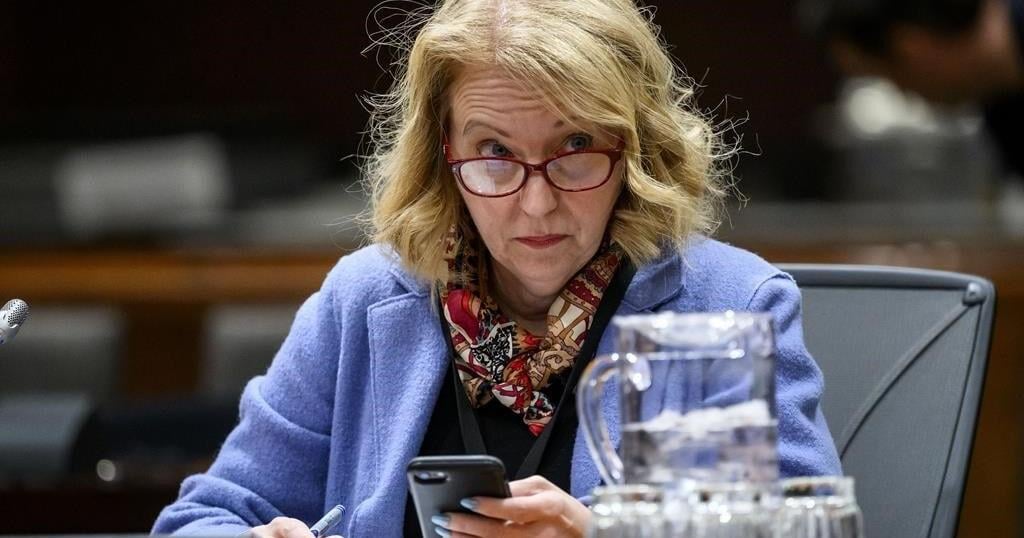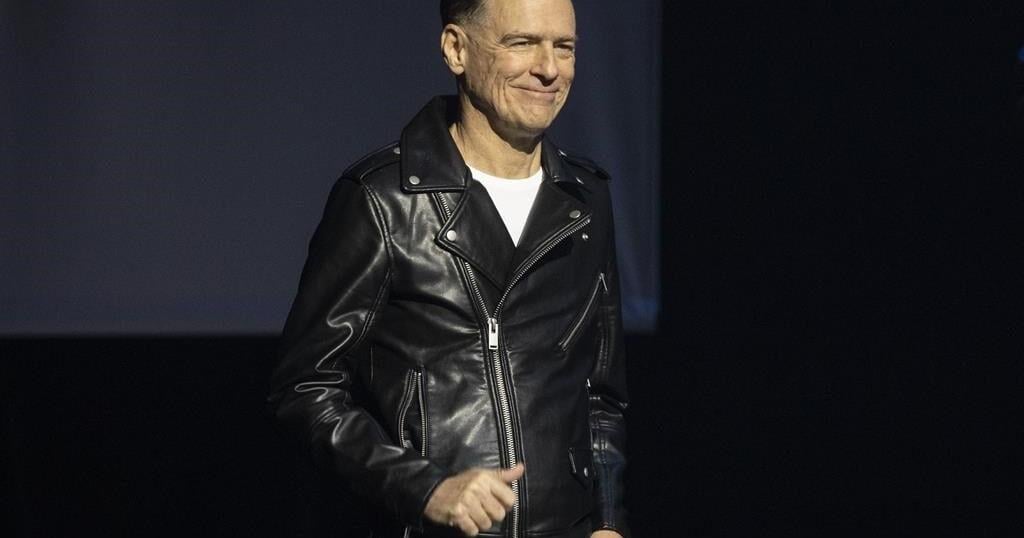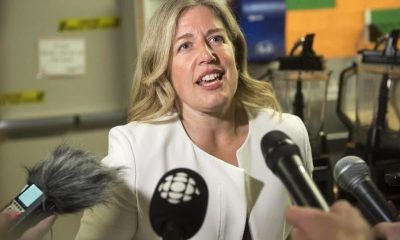OTTAWA – A former chief of staff to a Liberal public safety minister has denied suggestions she worked to stall approval of a spy service warrant in early 2021 because it directly touched the operations of the Trudeau government.
Zita Astravas called the allegation “categorically false” during testimony late Wednesday at a federal inquiry into foreign interference.
The inquiry has heard that it took 54 days for the Canadian Security Intelligence Service warrant application to be approved by Bill Blair, public safety minister at the time.
The average turnaround time for such applications is four to 10 days.
Michelle Tessier, CSIS deputy director of operations during the period, has told the inquiry there was frustration with the delay.
A timeline tabled at the inquiry says Astravas attended a briefing on the warrant application 13 days after CSIS sent it to Public Safety.
Astravas told the commission in a closed-door session during the summer that the questions she asked at the briefing were typical of those she would pose concerning such an application.
A newly disclosed summary of that testimony says she recalled a separate conversation about the accompanying Vanweenen list — a list of individuals who may be in contact with the target of the warrant and therefore could be affected.
Federal officials have cited national security in refusing to publicly discuss who CSIS hoped to surveil through the warrant.
Gib van Ert, a lawyer for Conservative MP Michael Chong, suggested to Astravas on Wednesday that after she saw “how deeply involved this warrant would bring CSIS with the affairs of your party and your government, you didn’t want it to go ahead, and if it had to go ahead, you wanted to slow walk it.”
Astravas replied that she couldn’t mention specifics of the warrant, “but I can tell you that your assumptions are categorically false.”
Blair, now defence minister, is slated to testify at the commission of inquiry Friday.
He has already told the inquiry behind closed doors he first became aware of the warrant application on the date he recalls signing it.
“He did not know that it had been received by his office before that date,” says a summary of Blair’s evidence. “He was not aware of the date his office received it and no one showed him the earlier dates on the documents.”
The summary says on the date he signed the warrant, he became aware that there had been some discussion and questions raised by his office with the director of CSIS and the deputy minister of public safety. “However, he was not aware of how long it had been with his office.”
Astravas testifed Wednesday that CSIS director David Vigneault would flag matters of priority and “we would work with the director and his team” in order to put an item on the minister’s agenda.
During this period of time, there were a number of contacts involving the CSIS director, the minister and the deputy minister, she said.
“At no point was (the warrant) raised as a matter of urgency.”
The commission of inquiry’s latest hearings are looking at the ability of federal agencies to identify and counter foreign interference. A final report is due by the end of the year.
In other testimony Wednesday, national security adviser Nathalie Drouin rejected the notion there are traitors in the House of Commons, despite an eyebrow-raising report from a spy watchdog that flagged questions about politicians’ loyalties.
The National Security and Intelligence Committee of Parliamentarians said in June that some parliamentarians were “semi-witting or witting” participants in the efforts of foreign states to meddle in Canadian politics.
The blunt but vague assertion by NSICOP, an intelligence watchdog made up of MPs and senators who are sworn to secrecy, prompted a flurry of concern that people knowingly involved in interference might still be active in politics.
Drouin, who advises the prime minister on intelligence matters, told a federal inquiry into foreign interference Wednesday the watchdog’s conclusion that some MPs might have acted in a treasonous manner makes her very uncomfortable, because that’s not what she sees.
Drouin said she has learned of inappropriate behaviour and lack of judgment on the part of certain politicians.
However, after reviewing the relevant intelligence she found no MPs had engaged in espionage, sabotage or other activities that put the security of Canada at risk.
“I remain extremely confident with respect to the present MPs,” Drouin said in French.
Putting forward any other impression diminishes the trust of the Canadian public in the democratic system, she added.
Inquiry commissioner Marie-Josée Hogue and her staff have identified and reviewed the intelligence reports referred to in both the classified and public versions of the NSICOP report.
The inquiry has also questioned senior government officials and intelligence agencies behind closed doors about the sensitive findings.
However, Hogue has said she will not be publicly identifying parliamentarians suspected by NSICOP of meddling.
She has cautioned that the NSICOP report’s specific allegations are based on classified information, which means the inquiry can neither make them public nor even disclose them to the people in question.
As a result, the inquiry won’t be able to provide the individuals with a meaningful opportunity to defend themselves, Hogue said.
This report by The Canadian Press was first published Oct. 9, 2024.























